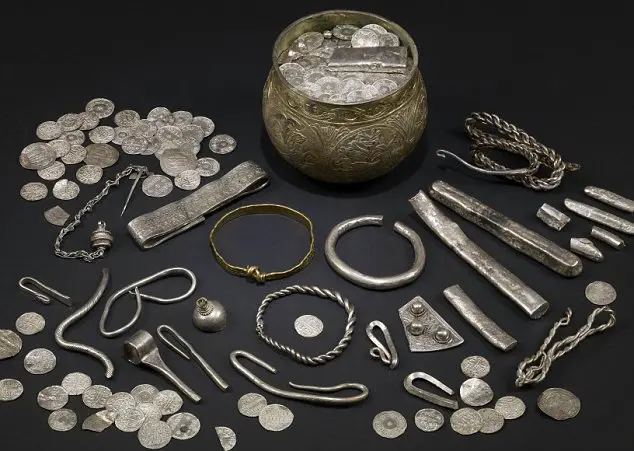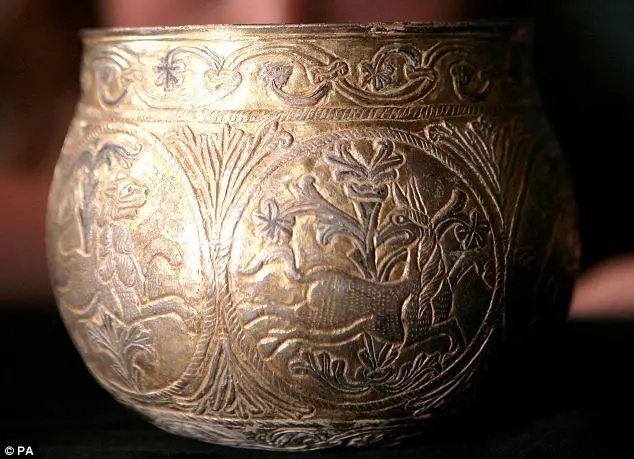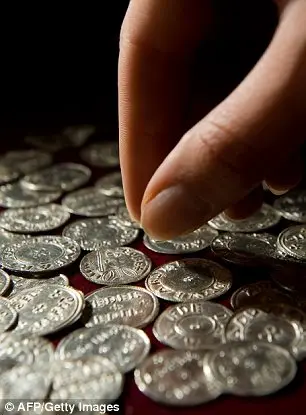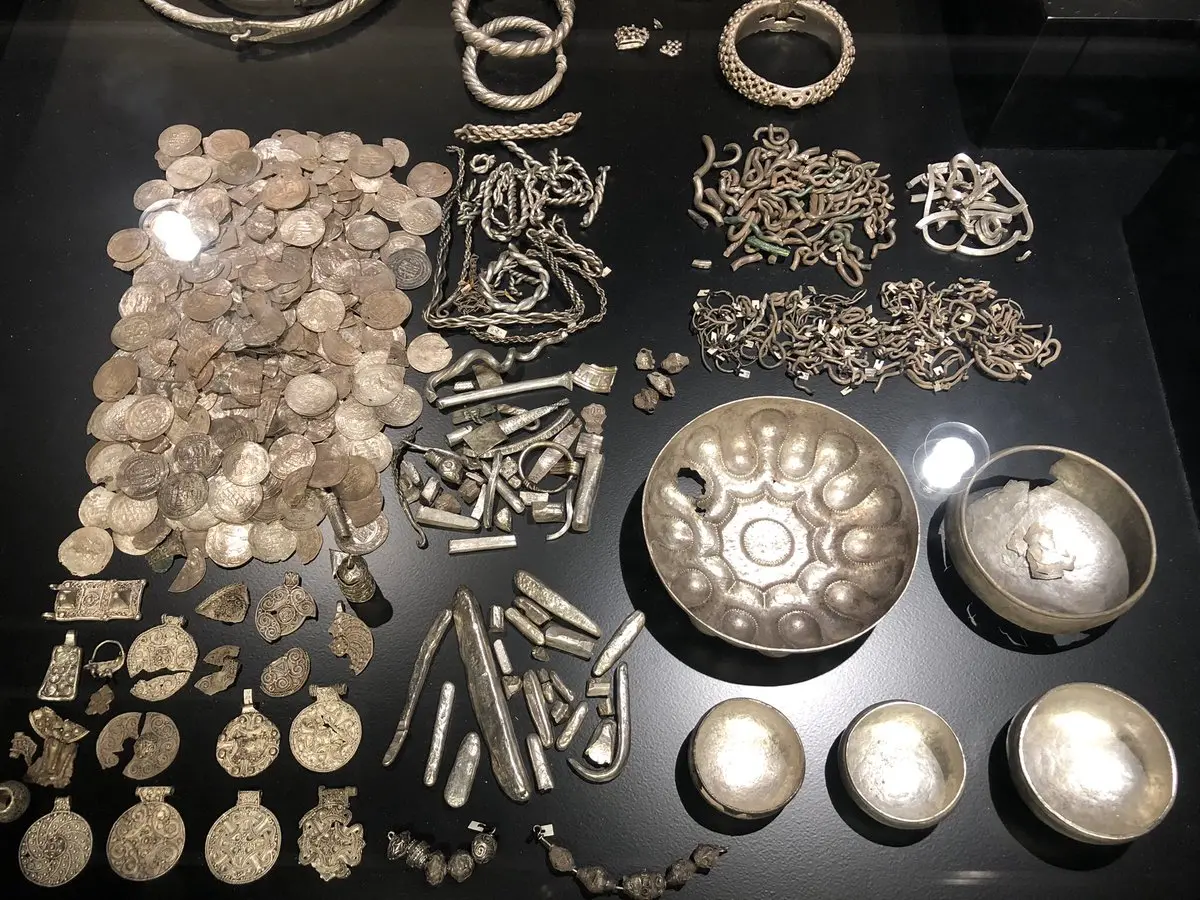An impressive Viking hoard of jewellery has made a father and son metal-detector team £1m, after being bought by two British museums.
The find, which is the ‘largest and most important’ since 1840, was found in a field in Harrogate, North Yorkshire in January 2007. It had been buried there for more than 1,000 years.

A king’s ransom: Silver jewellery buried more than a millennium ago will now go on display in London and Yorkshire
Valued at £1,082,000, the hoard was purchased by the British Museum and the York Museum Trust after two years of fundraising.
The highlight of the collection is an intricately carved silver cup, estimated to be worth more than £200,000. It contains 617coins and various silver fragments, ingots and rings. Some of the pieces were from as far away as Afghanistan.
The treasure is believed to have belonged to a rich Viking who buried it during the unrest following the conquest of the Viking kingdom of Northumbria in 927 by the Anglo-Saxon king Athelstan.
It is believed he was unable to go back to the hoard, possibly as a result of turbulence during the period.

The silver cup is worth around £200,000. Many of the coins were preserved as they were kept inside the vessel
Conservation work on the find began about a month ago and experts hope the process will reveal crucial details about the Viking era.Initial examinations suggest the treasure dates back to AD927 or 928.
Experts have spent over a month cleaning the hoard, often with a porcupine spine, to protect the delicate collection.

Silver coins from the Vale of York Viking hoard. They will go on display in Yorkshire and London
The process, performed under microscope, has already revealed intricate designs which were invisible when the hoard was first discovered.
Detail on the silver jewellery fragments and in the designs and inscriptions on some of the coins is now apparent.
Close examination revealed small incisions made in the metal – evidence that the makers tested the silver before they began work.
Gareth Williams, curator of early medieval coins and Viking expert at the British Museum, said: ‘There’s been nothing like it for over 150 years.

‘The size and range of material gives us an insight into the political history, the cultural diversity of the Viking world and the range of cultural and economic contact at that time.’
He said some parts of the hoard came from as far as Afghanistan as well as from Russia, Scandinavia and continental Europe.
Most items were preserved because they were hidden in the cup.
Finders David Whelan, 53, and Andrew, 37, from Leeds, said: ‘Being keen metal detectorists, we always dreamed of finding a hoard but to find one from such a fantastic period of history is just unbelievable.
‘The contents of the hoard we found went far beyond our wildest dreams and hopefully people will love seeing the objects on display in York and London for many years to come.’

The pair will share the £1,082,000 with the owners of the field, who wished to remain anonymous.
Mary Kershaw, director of collections at York Museum, said: ‘The Vale of York Viking hoard is a once in a lifetime find. It will greatly add to the understanding of the early 900s in Yorkshire and its connections with the wider world.’
The treasure will go on display at the Yorkshire Museum in York from September 17 until November 1. It will then travel to the British Museum.
According to historians, Yorkshire is one of the areas which shows the strongest Viking influence.




